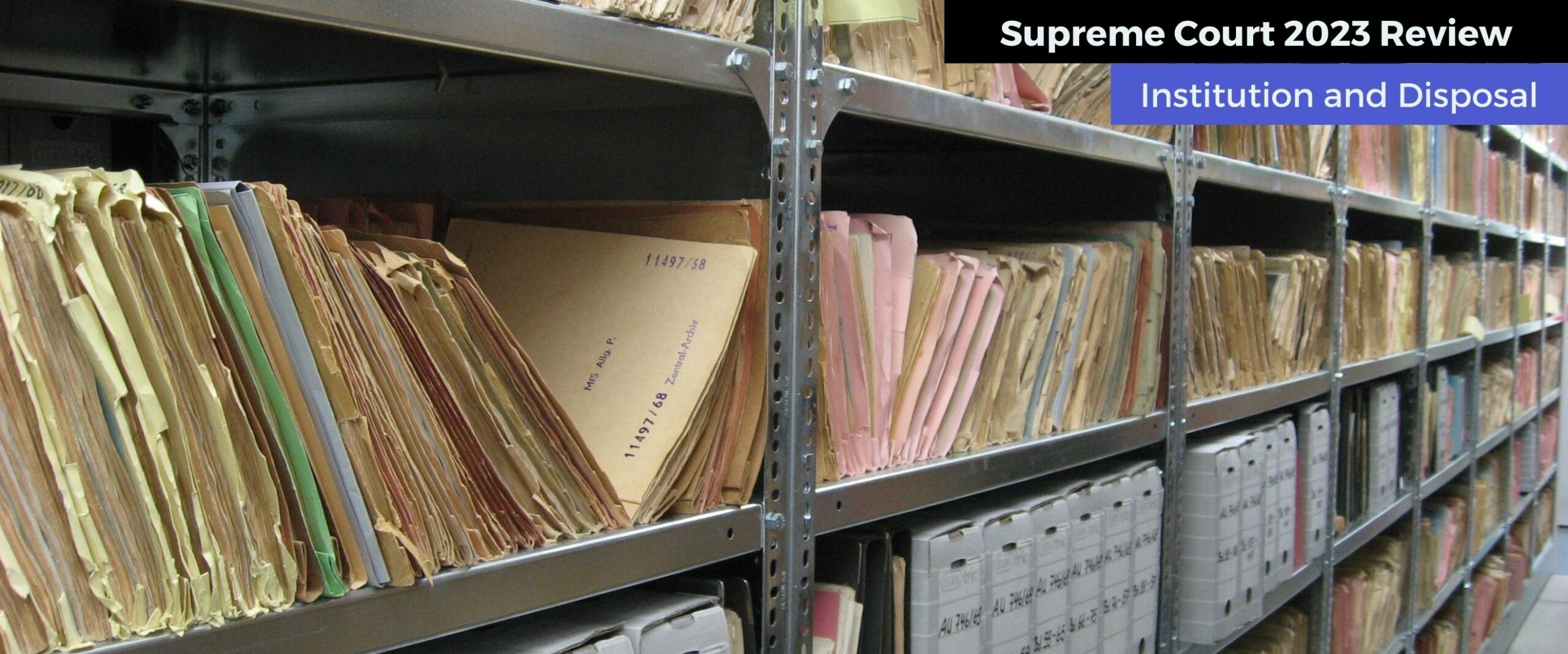Court Data
High institution, high disposal of cases in a busy year for the Supreme Court
Cases instituted in 2023 crossed pre-pandemic levels from 2019 but disposal rate was particularly healthy at 96 percent

This year, pendency of cases at the Supreme Court reached an all-time high with well over 80,000 cases. But it was also one of the more efficient years of the Court. Information from the National Judicial Data Grid (NJDG) suggested that the top court disposed of 52,220 cases—that’s 31 percent more than 2022. Data also suggests that at 53,770, 47 percent more cases were instituted in 2023 than in 2022 which saw only 36,565 cases.
The factor that explains the apparently contradictory trends of high pendency and high disposal is higher institution or filing. The high filing numbers for this year, in turn, can be put down to two reasons—increased access to the Court due to technological upgrades and a change in the counting method from November 2022 to include all diarised matters like Miscellaneous Applications, Unregistered Matters, Defective Matters. (Before this change, figures only included registered cases.)
Institution, disposal, pendency
Here, we dive into institution and disposal numbers in 2023—how they played out over the course of the year, and how they stack up against numbers since the pandemic.
Institution refers to the number of cases that enter (cases that are filed at) the Supreme Court and disposal indicates the number of cases that exit the Court. Pendency indicates the number of cases that remain open.
In general, institution is a function of several factors, access to the Court and the financial viability of the parties to appeal lower court judgements. It can also be influenced by the substantive and procedural laws that govern remedies and shape the journey of cases.
Disposal is largely dependent on the administrative capacity of the Court—the number of sitting judges or benches constituted. It is also influenced by the complexity of the case and how long the court takes to answer the question of law involved.
53,770 new cases were filed at the Supreme Court last year and 52,220 cases were disposed of. The disposal rate of 96 percent was its highest in recent history.
The graph below tracks the number of cases instituted and disposed of by the top court every month.
Note: The figures from January-October 2023 are collected from the Supreme Court’s recent Annual Report and the data for November 2023 (which includes a part of December) is collected from the NJDG as of 26 December 2023 at 12:25 p.m.
Institution and disposal rates tracked each other every month throughout the year except for May, June and July. In June, the Court instituted 1,873 more cases than it disposed of—this can be explained by the fact that the Court closed for a six-week summer vacation on 20 May. In addition, the retirement of three judges—Justices K.M. Joseph, Ajay Rastogi and V. Ramasubramanian—brought the Court’s sitting strength down to 31 judges.
Flurry of Constitution Bench activity
In July, conversely, the Court disposed of 2,728 more cases than it received, reflecting the renewed enthusiasm of judges and litigants after the break. Additional factors that could have led to higher disposal include a slightly stronger bench strength (the Court got two new judges on 14 July) and modernised facilities (the first three courtrooms were equipped with 120-inch screens for better interaction with lawyers appearing online.)
The months from August to November saw a flurry of Constitution Bench activity. In August, there were 13 long days of hearings in the challenge to the abrogation of Article 370. The five senior-most judges of the Court were occupied on the Constitution Bench proceedings of the case for most of the month and a part of September.
In September, eight Constitution Benches assembled 13 times to hear Article 370, set hearing dates for the challenge to Assam’s NRC and the extent of the immunity granted to legislators in bribery cases. Division Benches of the Court also heard other significant cases, such as the challenge to the remission granted to the convicts in Bilkis Bano’s case.
Despite five judges being tied up in one case at any point this year, disposal numbers remain impressive, giving credence to the theory that constitution Benches do not clog up the Court after all.
Post-pandemic recovery
2023 was the second fully functioning year for the Supreme Court after COVID-19. The Court updated its e-filing systems with the E-filing Module 2.0 and also launched the e-Sewa Kendra to help citizens file and access video conferencing tools. Staff members were designated to provide technical assistance. The Court’s annual report also indicates the creation of 166 Special Benches to help with the docket.
In 2023, institution and disposal numbers surpassed those from the last full pre-pandemic year of 2019. Only 25,897 and 29,738 cases were instituted in 2020 and 2021 respectively. There was a strong sign of recovery in 2022, with the institution at 36,565.